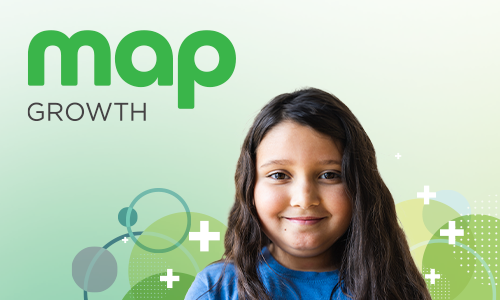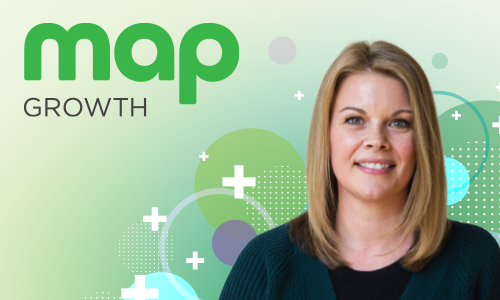
The results of assessment—whether you’re using formative assessment strategies or an interim assessment like MAP® Growth™—can empower teachers and school leaders to inform instructional decisions.
Assessing students well is key to ensuring instruction is empowering. To ensure you’re assessing students well, the processes, tools, and information provided by assessments can help you accurately and fairly understand where students are in their learning. But first, you must ask yourself what your goal is.
Why are you assessing?
The first thing to do before assessing students is ask yourself, what are you hoping to accomplish? Here are examples of questions assessments can help you answer:
- As a teacher, how can I adjust my instruction to meet students’ needs? How will I know what kind of progress they’re making?
- As a school principal, how can I ensure that the students in my school are tracking toward key milestones? How can I offer the best professional development to support teachers?
- As a district administrator, how can I evaluate our district’s programs for improvement planning? What’s working best, and what should we stop doing?
- As a family member, how do I know my child is receiving instruction that will extend their current knowledge and skills?
- As a student, how does my learning connect with my goals?
What to do with assessment data
Once you know your purpose, you’re ready to assess. Assessments that deliver data that can be used in real time to make a difference in education provide priceless opportunities for teachers and school leaders.
Here are some examples of what educators can do with actionable assessment information:
1. Differentiate instruction by student readiness
Sound interim assessment data lets teachers know exactly where each student is compared to their classmates and peers nationwide. It allows a teacher to meet students within their zone of proximal development (ZPD), the optimal spot where instruction is most beneficial for each student and just beyond their current level of independent capability.
MAP Growth uses a grade-independent RIT score that measures academic growth much like a yardstick might measure physical growth. Starting from this score, teachers can begin providing tailored instruction to meet student needs. They can then use ongoing formative assessment strategies to update their understanding of student knowledge over time.
2. Set academic goals
Effective student goals should be both ambitious and realistic, balancing what a student can reasonably achieve with the ambition that helps them make substantial growth.
Using tools like our MAP Growth Goal Explorer, teachers can identify MAP Growth learning targets that are reasonable between assessment periods. These conversations can help a teacher and student set a learning path together, where short-term goals provide the incremental progress necessary for a student to hit their MAP Growth target.
Over time, students should progress to setting their own goals, focusing on the benefits of learning itself rather than competing with other students or pleasing their teachers or family members.
3. Evaluate programs and target professional development
School and district leaders can use data to evaluate curricula and intervention programs, inform changes in instructional practice, and target professional development. Status and growth data in NWEA assessments can help identify what’s working and point to successful programs that can be scaled up, for example. It helps answer questions like, did the students in our new math program experience higher rates of growth than other students? Where do our teachers need to focus instructionally? What kind of professional development will assist our district in targeting areas of concern?
If your teachers need further development, our professional learning team can help. We offer workshops on using MAP Growth data, responsive teaching and learning, and many other topics.
Learn more
Using student growth data to inform instruction can be a valuable and efficient tool for driving students’ academic gains. MAP Growth provides the reliable and valid data you need to understand where each student sits on a pathway of learning. The assessment can also help you start a conversation with students and their families about learning that supports growth, motivation, and agency.
To learn more, download our guide Jump-start high growth instructional strategies with MAP Growth and visit our archives of posts on assessment and MAP Growth here on Teach. Learn. Grow. Contact our sales team to learn more about using MAP assessments in your school or district.







